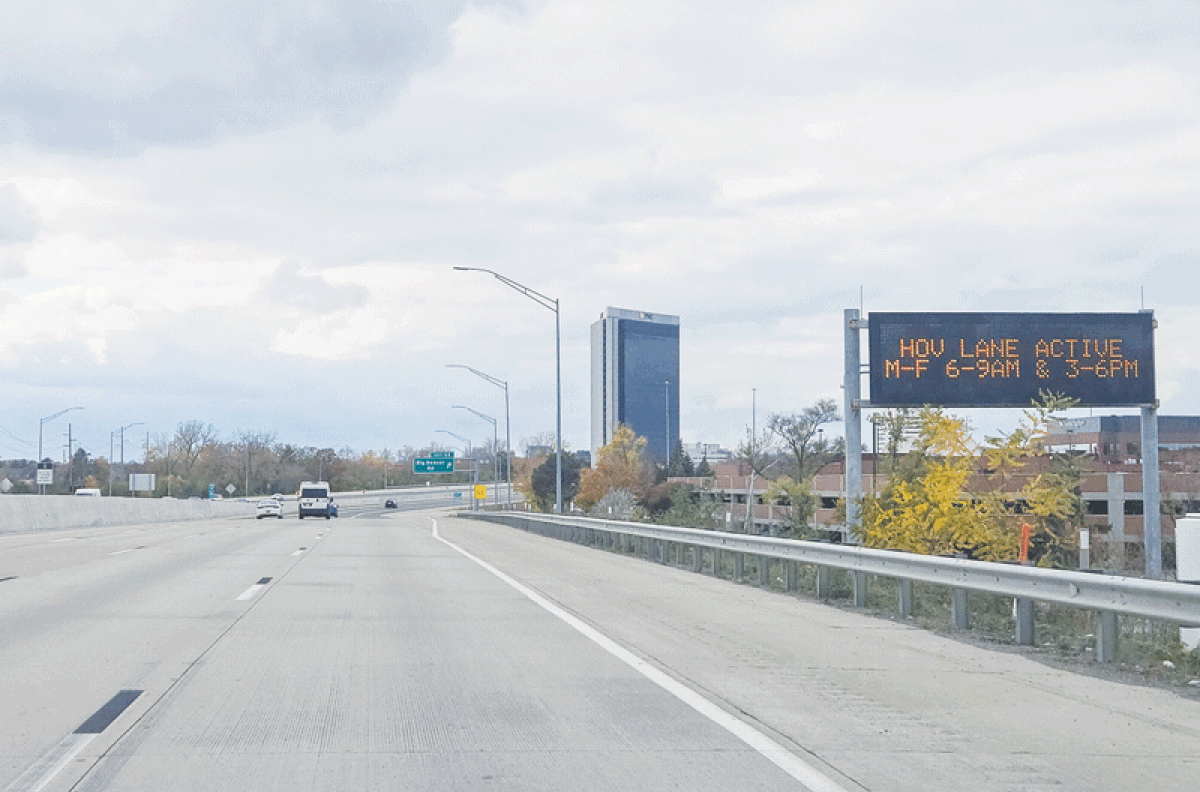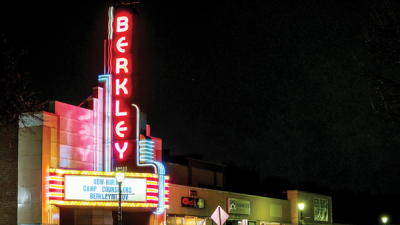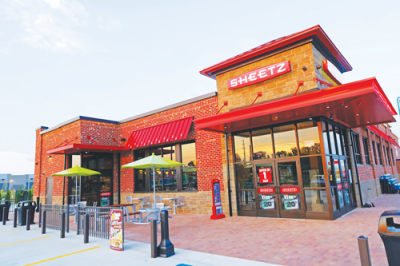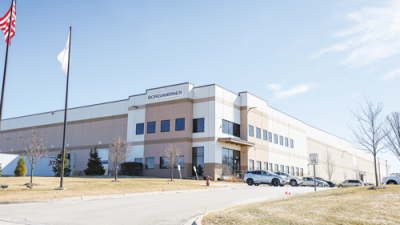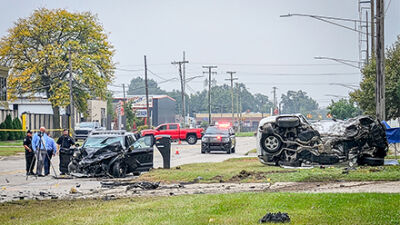OAKLAND COUNTY — Michigan will see its first high-occupancy lanes implemented this November on Interstate 75 between 12 Mile Road and South Boulevard … at least some of the time.
More commonly referred to as carpool lanes, high-occupancy lanes are only usable by vehicles with at least two human occupants. The lane was planned in tandem with the overhaul of I-75 that began taking place in 2016 by the Michigan Department of Transportation.
“The lanes were built into the project over the last six years. … The idea to make a capacity improvement for that portion of I-75 was decided when we were working with federal partners and we conducted several public meetings with stakeholders,” explained MDOT spokesperson Rob Morosi. “The feds wanted us to do something different with regard to capacity improvement to improve safety and travel time reliability. This was decided before construction to make that fourth lane on that stretch a high-occupancy lane.”
However, the lane on that portion of the expressway will only function as a high-occupancy lane during rush hour.
“They are implementing it right now,” said Morosi. “The signs have been fabricated and are being put up. Of the 18 miles we’ve rebuilt since 2016, the additional lane between Eight Mile Road and 12 Mile Road is a general use lane, which has no restrictions on number of occupants or time, so a solo driver can use it 24/7. The left lane between 12 Mile and South Boulevard will be a high-occupancy lane between 6 a.m. and 9 a.m., and 3 p.m. and 6 p.m. Mondays through Fridays.”
Morosi added that research indicates the lane should reduce traffic and accident rates.
“It also should improve capacity, which will reduce traffic and travel times,” said Morosi. “During the study phase, we did extensive crash history studies, and the majority of the incidents on this stretch in terms of crashes occurred during dry conditions, and the majority were rear-end collisions, which indicated a capacity problem. In other words, we had too much traffic for only three lanes in each direction. When we looked at other ways to improve safety, the HOV lane we saw in other states, an HOV lane encouraged carpooling during high travel times, which improves capacity issues and cars driving too close to each other.”
Motorcycles, transit buses, first responders and emergency vehicles are exempt from occupant requirements.
Lt. Mike Shaw, the public information officer for the Michigan State Police, wants drivers to know that this shouldn’t adversely affect anyone’s commute, and he thinks drivers simply need to be aware of the new rules.
“People can be stopped as of this week,” he said Oct. 27. “We will be patrolling as we always do. … We’ve never had a high-occupancy lane, so if we have one, it’s obviously going to mean at least somewhat of an uptick in violations. … Just pay attention and mind the signs and other notifications.”
That portion of I-75 is patrolled both by the Michigan State Police and some of the municipalities it runs through.
Sgt. Ben Hancock of the Troy Police Department said in an email that “during peak hours of 6-9 a.m. and 3-6 p.m., only vehicles with two or more occupants can use the lane. In addition, motorcycles, buses and emergency response vehicles can use the lane at any time. During off-peak hours the high occupancy lane is treated as any other lane on the freeway. … A high occupancy lane violation is a civil infraction with a fine of $135 (2 points) and $195 (2 points) for a commercial motor vehicle.”
The implementation of the high-occupancy lane was always intended to begin following the completion of the I-75 rehabilitation project.
“The whole I-75 reconstruction project was about $1 billion, and these (high-occupancy lane) costs were part of that project,” said Morosi. “It rebuilt over 18 miles of freeway, replaced 47 bridges, modernized interchanges at Big Beaver, 14 Mile Road, 12 Mile Road, and constructed a new braid ramp with I-696, and built a 4-mile-long drainage tunnel.”
He added that some other portions of the refurbishment project were put in place to complement the high-occupancy lanes.
“We rehabilitated a carpool lot at the Adams Road exit route near the top of the changed portion of I-75. There are two new lots at 12 Mile Road, near the I-75 interchange there,” said Morosi.
Morosi said drivers simply need to become acquainted with the new rules and that the rules are clearly marked for people to see prior to entering each end of the designated area.
“Some people are confused because of the high-occupancy lanes having designated times,” he said. “The two or more occupants have to be human occupants, so no pets or cardboard cutouts. Besides the designated hours around rush hours during the week, that lane can be used by solo drivers without the risk of citation. Close to 70% of the time it is still usable as a solo-use lane. … They will be marked with diamonds on the lanes and some signage on the side of the road. That’s the national signage to mark such lanes.”
Morosi admitted that there has been some skepticism about the high-occupancy lanes being used in Michigan, but he believes that drivers will come to appreciate them after they see the benefits.
“Anything that’s new will come with some trepidation and skepticism,” he said. “We acknowledge that. That was the case when we built the flex route on M-23, near Ann Arbor, and complaints there have faded. Given time, these new methods generally work very, very well and improve safety.”
 Publication select ▼
Publication select ▼